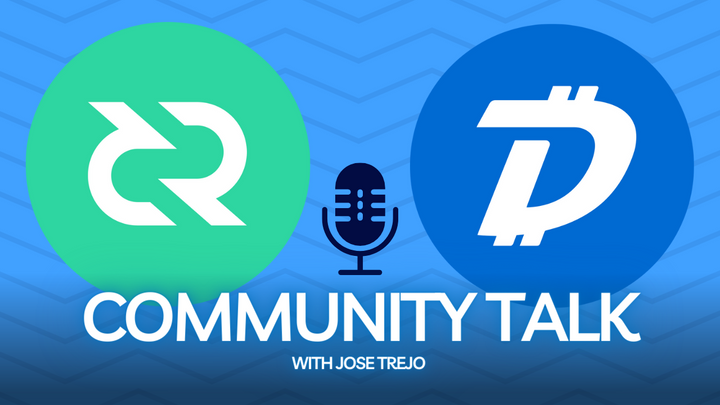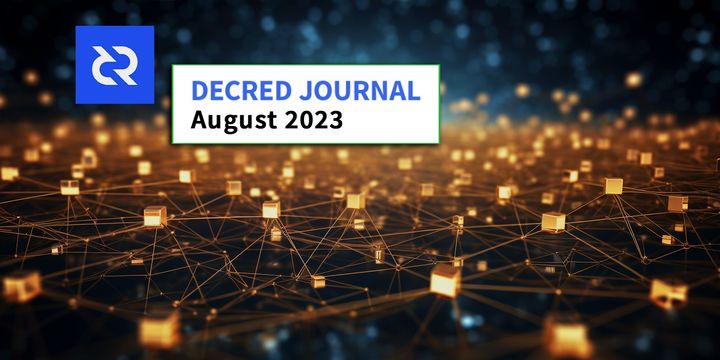A central focus in the Second Crypto War revolves around the contentious discussion of end-to-end encryption.
Introduction
The Second Crypto War, similar to the First Crypto War, united cryptography experts, privacy advocates, government agencies, and tech companies in a many-sided conflict. It centred on reconciling the contrasting needs of individual privacy and government surveillance. In this article we will examine the historical background, influential figures, and ramifications of the Second Crypto War, delving into the delicate equilibrium between privacy and government surveillance, and evaluating its repercussions.
The Origins of the Second Crypto War: Insights From the Initial Crypto Conflict
The First Crypto War unfolded in the 90s, marking a conflict between governments and privacy advocates striving for dominance over encryption technologies. This historical episode made way for decentralized cryptographic technologies, influencing the creation of digital currencies.
The enduring impact of the First Crypto War is evident today through various developments:
- The advent of Bitcoin: Bitcoin was conceived as a direct response to the centralized nature of financial systems and concerns about a lack of privacy and control over funds. Aligned with the principles of the First Crypto War, it aimed to enable private, secure transactions and financial sovereignty for users.
- Rise of privacy-focused cryptocurrencies: The increasing prominence of privacy-centric cryptocurrencies, such as Decred and Monero, represents a continued extension of the struggle for digital privacy rights initiated during the First Crypto War. Whilst Decred has opt-in privacy it also advocates for better governance.
- Advancements in decentralized cryptographic technologies: Technological progress, including the invention of the proof-of-work mechanism, drew inspiration from the development of decentralized technologies during the First Crypto War. These innovations contribute to the ongoing evolution of cryptographic systems.
The Dawning of the Second Crypto War
The inception of the Second Crypto War was triggered by significant events, sparking a renewed global discourse on encryption, privacy, and security. In 2013, Edward Snowden, a former NSA contractor, disclosed extensive mass surveillance practices by the US government, bringing about public debates on privacy rights, government access, and encryption. Another development in this crypto conflict was the widespread adoption of end-to-end encryption in communication platforms, exemplified by WhatsApp (2014), Signal (2013), and Apple's iMessage (2011-2014).
The earlier debate of The First Crypto War primarily focused on the distribution and export of specific encryption technologies like PGP. In contrast, the Second Crypto War extended its scope to the widespread adoption of encryption. It unfolded on a global scale, involving governments and their agencies (such as the NSA), tech companies, and privacy advocates. The ramifications of this conflict reached beyond individual nations, resonating with the increasing integration of the internet and digital technologies into daily life worldwide.

Crucial Debates in the Second Crypto War
A central focus in the Second Crypto War revolves around the contentious discussion of end-to-end encryption. This technology, designed to secure user communication, ensures that only the sender and receiver can decrypt the message content, safeguarding user privacy and data confidentiality. However, the debate gains complexity as law enforcement and government agencies argue that such encryption hampers their ability to combat crime and terrorism. This has led to calls from some governments for the establishment of "backdoors" to enable access to encrypted data in specific situations.
Notable examples include:
- The US "Clipper Chip" proposal (1993): An early attempt by the US government to create encrypted communication with a "backdoor" for law enforcement access. This proposal faced significant opposition and was eventually abandoned due to technical vulnerabilities and public backlash.
- The UK Investigatory Powers Act (2016): Commonly known as the "Snooper's Charter," this legislation granted UK law enforcement and intelligence agencies the authority to access user communication metadata and, in certain cases, mandate the removal of electronic protections imposed by a company or individual.
- Will the new Hate Speech and Hate Crime Law (2024) in Ireland come with some "backdoors" to easily identify people online?
The Apple vs. FBI Case (2016):
A prominent legal clash shedding light on the encryption-government access debate is the 2016 Apple vs. FBI case. Triggered by the San Bernardino terrorist attack, the FBI sought Apple's help in unlocking an iPhone linked to one of the attackers. Apple refused, asserting that creating a software "backdoor" would compromise device security and set a perilous precedent. After a prolonged standoff, the FBI eventually accessed the device through a third-party tool, abandoning its legal pursuit against Apple.
The Apple vs FBI case catapulted encryption and government access into the spotlight, sparking widespread public discourse on the delicate balance between privacy rights, security, and law enforcement needs. This legal saga deepened the ongoing conflict between technology companies and government agencies, intensifying their respective stances on encryption and backdoor access.
Encryption, Counterterrorism, and Legislative Measures
The surge in global terrorism presented new challenges, as extremist groups increasingly utilized encrypted communication platforms for attack planning and execution. In response, governments contemplated legislative measures to address the potential risks associated with encryption.
Examples include:
- The Australian Assistance and Access Act (2018): Empowering Australian law enforcement, this law allows authorities to compel companies to provide technical assistance for accessing encrypted communications when deemed necessary. Critics argue that this legislation establishes a precarious precedent, raising concerns about potential threats to digital security and privacy.
- The US EARN IT Act (2020-ongoing): The Eliminating Abusive and Rampant Neglect of Interactive Technologies (EARN IT) Act seeks to hold companies accountable for user-generated content promoting child exploitation. However, critics contend that it jeopardizes online privacy and freedom of speech. They argue that the bill might weaken encryption standards, potentially leading to government overreach and censorship. Critics also posit that the bill's focus on child sexual exploitation serves as a pretext for undermining online privacy and security.
- Irelands Hate Speech and Hate Crime Law (2024 - yet to be enacted) - It says that it is an offence to communicate threatening, abusive or insulting material that is intended, or likely to, “stir up” hatred against a group of people because of their race, colour, nationality, religion, ethnic or national origins, membership of the travelling community or sexual orientation. Critics have argued "What deems hate speech?", "Is this an attack on freedom of speech?". Some might argue hate speech is anything that doesn't agree with the governments narrative and you will be arrested if you oppose those views.
These instances underscore the intricate nature of the Second Crypto War. As encryption technology advances and global security challenges persist, the discourse surrounding encryption and its regulation will inevitably pose a substantial challenge in the years ahead.
Diverse Perspectives and Stakeholders in the Second Crypto War
The Second Crypto War involves a multitude of stakeholders, each with distinct priorities and goals.
These stakeholders harbor conflicting interests, contributing to a wide array of perspectives and contention:
- Governments strive to safeguard national security and ensure public safety. National and international agencies, such as the United States' FBI and the UK's Government Communications Headquarters (GCHQ), are dedicated to upholding national security and combating crime and terrorism.
- Tech Companies, including Apple, Google, and Microsoft, often overtly prioritize user privacy and security to preserve trust and market competitiveness. For instance, Apple resisted the FBI's request to create a backdoor into the iPhone, contending that it would compromise overall security and undermine the product's integrity.
- Privacy advocacy groups, such as the Electronic Frontier Foundation (EFF) and the American Civil Liberties Union (ACLU), assert that weakening encryption or permitting government access to encrypted data infringes upon civil liberties and individual privacy rights.
- Public users of encrypted technologies seek a balance between privacy and their governments' ability to protect citizens from harm. The 2013 surveillance revelations involving the NSA and whistleblower Edward Snowden, for instance, shifted public opinion towards valuing privacy and questioning government surveillance practices.
The divergent views and interests of these stakeholders significantly influence policy, regulation, and public sentiment. Achieving a harmonious balance is a challenging endeavour.

The Influence on Cryptocurrencies and the Blockchain Community
The Second Crypto War carries direct ramifications for cryptocurrencies and the blockchain community. The fundamental tenets of encryption — furnishing privacy, security, and trust — align closely with the foundational objectives of decentralized digital currencies.
For instance, notable cryptocurrencies such as Bitcoin, Monero, and Decred utilize cryptographic techniques to realize these objectives:
- Bitcoin: Encryption safeguards wallet addresses and private keys in Bitcoin, ensuring secure storage, transfer of funds, and confirmation of ownership.
- Monero: Boasting more robust privacy features than Bitcoin, Monero employs ring signatures and stealth addresses to obscure transaction details, enhancing user anonymity and security.
- Decred: Like its counterparts, Decred relies on cryptographic methods to secure transactions, providing a decentralized and secure digital currency system.
The Second Crypto War also casts its influence on the discourse surrounding government access and encryption regulation:
- Regulatory challenges: Privacy-focused cryptocurrencies might encounter regulatory obstacles and heightened scrutiny due to potential misuse in illicit activities, such as money laundering or terrorism financing.
- Impeded development: Stringent legislation could impede the advancement of privacy-enhancing features in existing digital currencies or postpone the introduction of new privacy-oriented cryptocurrencies.
- Adoption barriers: Public perceptions of privacy-focused cryptocurrencies and potential regulatory measures may impact user readiness to embrace these digital currencies, stemming from confusion or apprehension regarding potential legal consequences.
The outcome will undeniably change the direction of cryptocurrencies and the broader blockchain community, carrying particular consequences for privacy-focused digital currencies like Decred. The good thing about Decred is that it is adaptable unlike Bitcoin. Users can decide the path it takes and adapt. The self funded treasury allows for proposals to be voted on and the destiny is in the stakeholders hands.
Current Status and Future Implications
The Second Crypto War persists, with the United States, Australia, and the European Union recently proposing or enacting legislation to regulate encryption. This has sparked heightened discussions on the global stage. Moreover, advancements in privacy-preserving technologies, such as homomorphic encryption and secure multiparty computation, have added complexity to the ongoing discourse on privacy and data security challenges.
A collaborative compromise among stakeholders might be achieved, seeking a balanced approach that addresses government needs without compromising encryption technologies or privacy rights. This could involve the development of new technologies or legal frameworks that effectively address both privacy and security concerns.
Conversely, stringent government regulations may impose constraints or introduce backdoors in encryption technologies, potentially diminishing privacy rights. This could lead consumers and businesses to gravitate towards unregulated technologies to uphold their privacy and security.
In conclusion, the ultimate outcome of the Second Crypto War will profoundly impact the future of encryption, privacy rights, government surveillance, and the cryptocurrency world. The intertwined interests and influences of various stakeholders will persist in shaping policies, technologies, and public opinions.






Comments ()